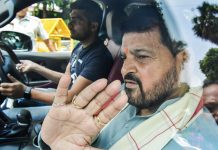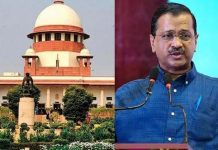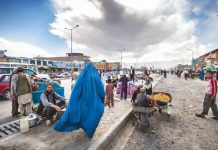
The reforms, put in place by the then finance minister Manmohan Singh in July 1991, had not only helped the country come out of the economic slump faced by the country 25 years ago, but it had also set a new and global framework for the future generation of policymakers, writes Charanjit Ahuja
July is a month to remember and 2016 is a year to celebrate the silver jubilee of economic reforms spearheaded by the then-finance minister, Manmohan Singh, considered the architect of reforms in India from July 1991 when PV Narasimha Rao was the Prime Minister. This was the time when India development model evoked sarcasm across the globe.
This was the year that proved the dictum that ‘coming events cast their shadows before’, wrong. The year 1991 had begun on an ominous note as the year saw political instability in India with Mandal Commission’s report on reservations leading to a crisis situation never witnessed before. Former Prime Minister, Rajiv Gandhi had been assassinated on May 21 and there was a wave of anguish and unrest.
It was under such trying circumstances when Manmohan Singh as the Finance Minister presented his budget on July 24. It was not only the political instability that had shaken the nation but there was a serious foreign exchange reserve crisis as well threatening the fundamentals of Indian economy. The foreign exchange reserves were so low that they could suffice for a maximum of 30 days only. It was this moment when Manmohan Singh delivered his historic speech that changed the destiny of Indian nation and its economic direction.
“There is no time to lose,” Singh urged, before going on to announce “essential reforms in economic policy…” Licensing, the bane of businesses, was tamed by the abolition of permits for all but a handful of industries; import-export policy radically altered and direct foreign investment was freed up.
An idea whose time had come
In his maiden speech as the union finance minister, Singh quoted one of the greatest French writers, Victor Hugo: “No power on earth can stop an idea whose time has come.” And rightly said this was an idea that changed the Indian nation for better.
Now 25 years later, India is among the world’s fastest economies and emerging third world leader. There still are issues like poverty, corruption, unemployment, lack of social security, gender inequality but there are positives like a growing middle class, gradual phasing away of subsidies and a burgeoning economy that is the envy of developed nations. Another positive is the growing literacy which will be a big advantage in the future as at present 95 per cent of children at 12 years are literate in the country, while a number of computer literates and mobile-savvy people is going up by the day.
The transition period from 1991 to 2016 has seen India emerge as a potential superpower, the only Asian power that can overtake mighty China in the 21st century. In July 1991, the Indian government for the first time devalued the rupee and thus began India’s growth story.
An International Monetary Fund bailout to steer India out of a balance of payments crisis in 1991 was the next big leap towards India growth story. The Indian rupee was devalued by 18 per cent and India’s trade policy was changed from its highly restrictive form to a system of freely tradable one allowing exporters to import 30 percent of the value of their exports. Globalisation became the buzz word when opening up of trade and investment, lowering taxes, breaking state monopolies India gave a push to private sector participation. Singh unshackled the country from the bureaucratic controls and licence-permit raj and took the economy to a high growth path of 7 percent during his five-year stint at the North Block. India’s foreign exchange reserves were barely a billion dollars and foreign direct investment was almost non-existent. Today our foreign exchange reserves are over $350 billion) and FDI is coming unabated.
The USP of Manmohan Singh was that he introduced more competition, both internal competition and external competition; simplified the tax structure and tried to create an environment conducive to the growth of business. A strong proponent of globalisation, Singh felt free to trade and India’s labor-intensive products can find markets, which will help India generate new jobs and reduce poverty. And he was proved absolutely right.
Little doubt that today the US ensured India’s entry into the nuclear club. Not only that, US-backed India to the hilt for a permanent seat in the UN Security Council. India in 2016 is a member of G20, the group of most powerful nations in the world. However, when Indian journey for globalisation began in 1991, our country was a member of G77, a group of developing countries. India was historically an economic laggard which grew at just 3.00 to 3.5 percent per annum.
A donor country
When India embarked on economic reforms in 1991, it was akin to a beggar that looked for funds from the International Development Association and the World Bank. Almost 25 years later, India today has become a donor country. A line of credit of $10 billion to Africa, $2 billion to Bangladesh shows how reforms have transformed Indian economy. Remittances from NRIs total $75 billion a year, and foreign direct and portfolio investment often exceed $60 billion per year. Commercial loans exceed $35 billion. It’s per capita income has shot up from $375 in 2011 to $1,700 today, taking it from low-income to middle-income status. India is making a serious bid to overtake China thanks to our young tech-savvy English-speaking population. The 25-years of reforms have resulted in catapulting India as the third-largest economy in the world after China and the US. The best part is that India has overtaken all European economies and Japan.
The recent budget estimates released by the Finance Minister, Arun Jaitley show that India has become the fastest-growing major economy in the world, touching 7.6 percent in 2016 after a similar rate in 2015. In fact, India accelerated to become a miracle economy, averaging 8 percent growth after the year 2003. Growth rate wise, much against what sceptics thought out, India has already overtaken China.
The transition period since 1991 has seen India emerge as a potential superpower, the only Asian power that can overtake mighty China

Manmohan recalls journey
A pat on the back now comes from the International Monetary Fund that has portrayed the US and India as two pillars holding up the wobbling world economy. Manmohan Singh in a rare interview to the Indian Express recalling the journey of economic reforms in India said that the exchange rate adjustment was done in two steps. The first step was to test the waters: what the public reaction would be, the reaction within the government and reaction from the opposition. “So I said by July 3 (1991), we must complete the full thing. C Rangarajan was the Deputy Governor (of RBI). Even then there was opposition. And Prime Minister Narasimha Rao had doubts over the second instalment of the exchange rate adjustment and told me, in fact, to stop it. But when I called up Rangarajan, he said that he had already shot the goal. Therefore, that was the end of it. He had already announced the new exchange rate,” Singh said.
“What we had announced was not any formal devaluation. We said that it was a market-driven adjustment,” Singh told the newspaper.
As reforms, the government had introduced a value added tax and started the process of reduction in customs duties in 1991. In the first Budget, the Securities Exchange Board of India was granted legislative status and Controller of Capital Issues was abolished. The National Stock Exchange was also introduced and received strong opposition from Bombay stockbrokers and the industry.
“When I took over, I said that the next three years will be nothing but blood and tears. Ultimately, I said that I had confidence that the economy would emerge victorious from this crisis but there were no shortcuts. And the economy recovered faster. Inflation came down, the Balance of Payments situation turned around sooner than I anticipated.”
Singh recalled discussions with industrialists who were opposed to the reform path the government was adopting. “In the very first week itself, there was opposition to the reforms agenda. So I managed to secure the support of P N Dhar, K N Raj, I G Patel and R N Malhotra. They came out with a statement supporting the reform process. Again, without A N Verma, the principal secretary to the Prime Minister, the support from the civil service would not have been as strong as it turned out to be,” Singh said. “Certainly, Indian industry is much more confident. They are the children of the 1991 reforms. Now they all feel that we did a good thing,” Singh said.
Singh said he found it remarkable that even if the process of change was put in place by a Congress-led government, the next United Front government, led by HD Deve Gowda and IK Gujral, carried forward the process. “In fact, Chidambaram presented what came to be known as a ‘dream budget’. Then came the BJP government which also continued the reform process.” Singh flagged India’s tendency to react to situations once they appear as a crisis as the hurdle in carrying out reforms. “I think in a crisis, we act constructively. When it is over, status quo takes over.”
A double-edged weapon
Indeed competition is a two-edged weapon as it helps those who are strong but hurts those who are weak and laggard. Manmohan Singh laid stress on macroeconomic stabilisation and opening up trade and payment system. He thus put in place a macroeconomic adjustment program with the active support of International Monetary Fund. The program combined monetary, fiscal, and exchange rate policies to reduce India’s gaping internal and external imbalances. IMF played a critical role in assisting India during its period of crisis.
India shining
Between 1991 and 2016, a record 138 million Indians were raised above the poverty line and the journey is poised to be faster after 2016 in view of the current pace of growth. China was earlier hailed for raising 220 million people above the poverty line between 1978 and 2002. However, India’s rate of poverty reduction was much faster.
Before 1991, India begged for food aid if the monsoon failed. When it suffered two successive droughts in 1965 and 1966, mass starvation was avoided only by US food aid.
The Green Revolution changed that, and private seed production further improved productivity after 1991. India suffered two successive droughts in 2014 and 2015. Yet this time, it remained a net food exporter. It became the world’s largest rice exporter in 2014.
In 1991, it took years to get a telephone landline. A telephone landline connection meant having to fill up a form and then waiting for a few years for the engineer to arrive. With the mobile phone revolution, scarcely anybody bothers about landlines any longer and, today, India has emerged as the third largest Smartphone market in the world.
Today, India has a billion cell phones, instant availability and the cheapest telecom rates in the world. Even people below the poverty line have phones. In 1991, only 20 percent of Indians had a TV set. Now two-third do. In 1991, Doordarshan had a TV monopoly. Today, the country has close to 1000 TV channels.
Modi, Jaitley continue with reforms
The year 2016 is the time to quote celebrated essayist Francis Bacon who penned that “a wise man will make more opportunities than he finds” because a normal man is content with the opportunities that he gets but a wise man has to make more opportunities than he finds. It was 26th May 2014 when Narendra Modi took over as the 15th Prime Minister of India riding on a NaMo wave sweeping the country. This was the first ever swearing-in of an Indian Prime Minister to have been attended by heads of SAARC countries. The Prime Minister of Pakistan, Nawaz Sharif and President of Sri Lanka, Mahindra Rajapaksa though faced strong opposition in India and their own countries.
To mark two years, the Centre for Media Studies conducted a survey, which suggested that Modi’s performance as Prime Minister was liked by a vast majority (62 percent) and a big majority (70 per cent) wished him to continue as the Prime Minister for another five-year term. Modi’s initiatives to improve administration and country’s image globally have received big thumbs up from a majority of people. The survey encompassed 15 states and covered both the rural and urban population.
During his maiden visit to the United States as Prime Minister, Modi had held meetings with a galaxy of American corporate executives including those from Boeing, PepsiCo, Google, KKR and General Electric. He had assured American corporate honchos of tax stability and friendlier business environment back in the country. The Make In India pitch by Modi, huge Japanese investment and top executives visiting India including Satya Nadella (Microsoft), Indra Nooyi( Pepsico), Sheryl Sandberg (Facebook), Jeff Bezos ( Amazon ) and Mark Zuckerberg ( Facebook ) pointed to the success of the programme. Under Jan Dhan Yojana for financial inclusion, more than 1.5 crore bank accounts were opened on the inauguration day itself.
Rising aspirations
India is changing radically. Not just mobile phones, liberalisation’s tangible effects can also be measured through parameters such as the mushrooming shopping malls and high-rise apartment buildings, as well as growing disposable incomes. But it is also to be found in India’s attitudes, aspirations and ambitions, all of which have changed drastically. Between 1999-2000 and 2011-2012, spending and consumption by the poorest 5 percent in the rural areas saw a increase of 30 percent in contrast to an increase of 60 percent by the richest 5 percent. Urban India followed a similar pattern.
Today, India has foreign exchange reserves of around $350 billion as its economy grows at a enviable 7 percent. From the shoe shine boy to chief executive officer, everyone’s life has been impacted in one way or the other—socially, politically and economically—by the process of liberalisation unleashed 25 years ago. Old orders have broken down and new worlds are being created, though not all of it is accessible to all.

At a glance
Globalisation
Globalisation refers to integrating the economy of a country with the economies of other countries. This necessitates free flow of trade, capital and movement of persons across borders. It includes an increase in foreign trade, export and import of techniques of production, the flow of capital and finance from one country to another and migration of people from one country to another.
Barriers
Prior to 1991, the government had put barriers to foreign trade and foreign investment to protect domestic producers from foreign competition, especially when industries had just begun to come up in the 1950s and 1960s. The overwhelming view was that competition from imports would deal a death blow to domestic industries. In the aftermath of globalisation, the government removed these barriers because in view of new thinking that domestic producers were ready to compete with multinational entities.
Labour laws
The globalisation demands flexibility in labour laws that is expected to help companies becoming competitive. By easing up on labour laws, company heads can negotiate wages and terminate employment, depending on market conditions. This leads to an increase in the company’s competitiveness. However, the trade unions and worker’s bodies have been opposing these because such a situation leads to the policy of hire and fire.
MNCs
Multinational Corporations (MNCs) set up their factories or production units close to ports and markets where they can get cheap skilled or unskilled labour. MNCs can set up production units jointly with some local companies or by buying a stake in the local companies and then expanding production using modern technology. Another way is that MNCs can place orders for small producers and sell these products under their own brand name to the customers worldwide.
Why liberalisation?
Historically, the developed countries have been looking towards developing countries to liberalise their trade and investment because then the MNCs belonging to the developed countries can set up factories in less-expensive developing nations, where labour is cheap, inputs are cheaper and there is flexibility in labour laws.
Impact of globalisation
Ironically, by and large, the impact of globalisation has not been uniform. It has only benefitted skilled and professional personnel in urban areas and not the unskilled personnel. The industrial and service sector has gained much in globalisation than in agriculture. Small local manufacturers of goods such as batteries, capacitors, plastics, toys, tyres, dairy products and vegetable oil have been hit hard by competition from cheaper imports.
Easier foreign trade
Liberalisation of trade and investment policies has helped the globalisation process by making a foreign trade and investment easier and providing companies ease of doing business. Earlier, several developing countries had placed barriers and restrictions on imports and investments from abroad to protect domestic production. Foreign trade provides opportunities for both producers and buyers to reach beyond the markets of their own countries. Goods travel from one country to another. Thus foreign trade leads to the integration of markets across countries.
letters@tehelka.com













